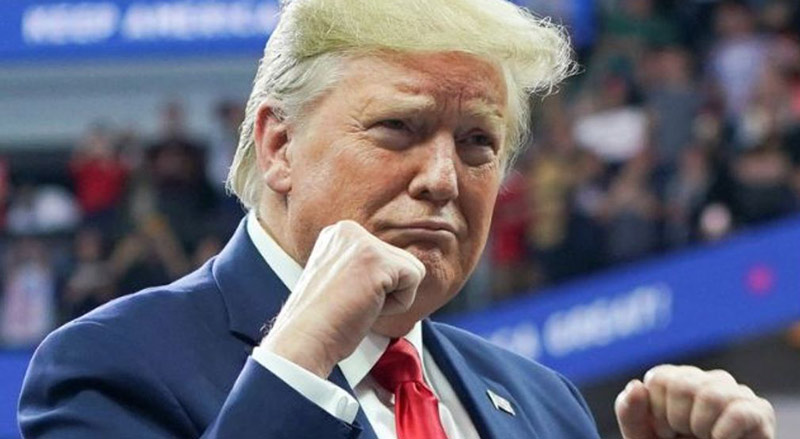Birdtail Sioux teen runs 100 km in Minnesota event to honour Dakota men hanged in 1862 mass execution
A teen from a southwestern Manitoba First Nation travelled more than 1,000 kilometres — and then ran over 100 more — late last month in honour of dozens of Dakota men who were hanged in the 1800s in what was the largest mass execution in U.S. history.
Runner Tao Moody, 17, made the trek from Birdtail Sioux Dakota Nation to Mankato, Minn., just before Christmas, where he ran about 100 kilometres in 24 hours — at points carrying a sacred bundle and flags — as part of an annual commemoration for the men sometimes referred to as “the Dakota 38+2,” who were executed following the Dakota War of 1862.
“You could feel the heaviness of the pain coming from some of the people, the elders that were there,” said Malcolm Blacksmith, who accompanied Moody on the run as a youth chaperone with the Indigenous youth-serving organization Jordan’s Principle Birdtail.
“What the elders are saying down there, they told us … that this is missing out of the history books.”
Blacksmith said he and Moody were compelled to make the journey to Mankato to support their Dakota relatives. The story of the Dakota executions marked a turning point in the Dakota nation’s history, he said, that has rippled through to today, in both Canada and the United States.
The Dakota 38+2
The Dakota War of 1862, also known as Little Crow’s War, was a six-week conflict in August and September 1862 between the United States and the Dakota of southwestern Minnesota, according to a Minnesota Historical Society website. It was sparked by treaty violations by the U.S. government that left the Dakota on the verge of starvation.
Following the conflict, hundreds of Dakota men accused of participating in the war faced trials that were “conducted unfairly in a variety of ways,” the historical society’s website says.
Ultimately, 38 men were executed by hanging on Dec. 26, 1862 at Mankato, southwest of Minneapolis — the largest mass execution in U.S. history.
Two other men were later brought back from Canada and executed at Fort Snelling in Minnesota.
Thousands of Dakota fled or were forcibly removed from Minnesota after the war — some of whom ended up in Canada — said Gwen Westerman, a Sisseton Wahpeton Oyate member and professor in English and humanities at Minnesota State University, Mankato.
“It was a miscarriage of justice that those 38 men were hanged on Dec. 26,” Westerman said.
“We need to talk about it. We need to learn about it so we can heal…. I think it’s such a deep wound and it hasn’t been talked about — not only among our communities and among the Dakota people, it’s not talked about in U.S. history.”
Westerman says she has watched the Canadian truth and reconciliation process — which she thinks is a national and sincere effort — with interest, but she said nothing quite like that is happening in the United States.
“There hasn’t been the acknowledgement of what happened and how it has affected generations of Dakota people,” Westerman said.
Commemorative ride, run
Dakota members themselves have commemorated the executions each year since 2005, with a more than 500-kilometre horseback ride and a more than 100-kilometre relay run, both of which end in Mankato on Dec. 26.
Westerman noted that Minnesota Gov. Tim Walz came to the Dec. 26 commemoration this year to issue an apology for the hangings.
Other small steps have been taken in the state, Westerman said, but reconciliation “requires all parties at the table.”
The annual commemorative ride and run, which Birdtail Sioux Dakota Nation’s Moody joined this year, end at Reconcilation Park, near downtown Mankato — the site of the 1862 hangings.
“When you look at it, it doesn’t look like that’s where anything happened because of how it’s all built up around it,” said Blacksmith, who accompanied Moody. “Right now they just have a monument.”
Blacksmith hopes events like the commemorative run open up more doors for people to advocate for Dakota history.
“They have huge support down there when this memorial run happens,” Blacksmith said. “We don’t have it up here in Canada.”
Going to Mankato was an amazing experience, Moody said, because he met so many supportive people during the run who were willing teach him about the Dakota 38+2.
He hopes to share that opportunity with others and bring even more runners to the commemoration next year.
Truth and reconciliation for Dakota
Lola Thunderchild, chief of Canupawakpa Dakota Nation in western Manitoba, and her family have deep-rooted connections with the Dakota 38+2.
Her uncles Gus High Eagle and Philip High Eagle, along with Jim Miller from the U.S., worked together to start the commemorative ride.
Thunderchild’s daughter Molly Taylor, 12, was recently named Miss Mahkato at an annual powwow in Mankato. As part of the title, Molly advocates for education and the remembrance of the Dakota men who were hanged.

The 19th-century executions in Minnesota, and their aftermath, have significance for the Dakota people in Manitoba, said Thunderchild.
“Some of our descendants were part of … the meaning behind the hanging,” she said, since their ancestors “were running from the government.”
Unfortunately, she said, some of the same views that led to the hangings linger in contemporary society.
“With the truth and reconciliation coming forth this is a good chance to … bring that up again because, you know, that’s what reconciliation is all about,” Thunderchild said.
“We need to recognize that [reconciliation and education],” she said. “Even just to be acknowledged as the Dakota people — it’s been a battle.”



